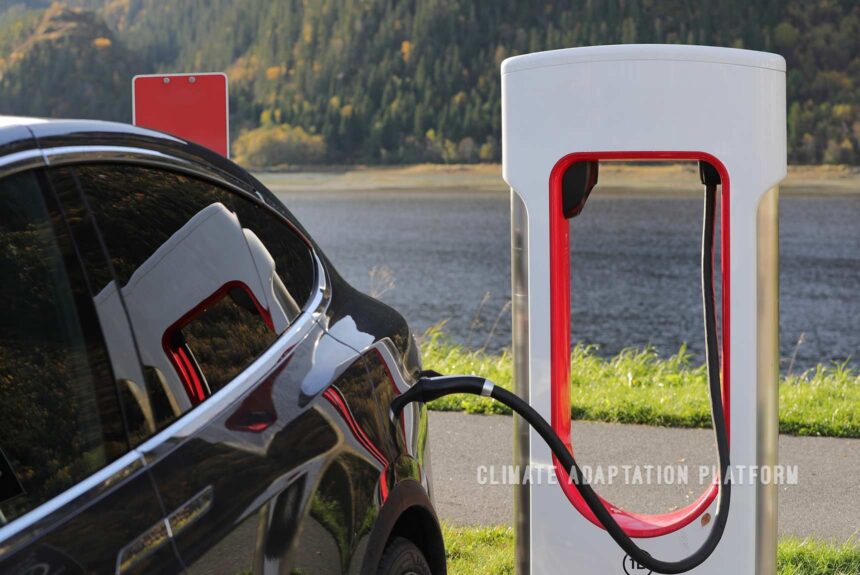Electric cars are not something new. The first electric car was introduced almost two hundred years ago, in the 1830s, by Scottish inventor Robert Anderson.
Anderson built a “crude electric carriage”, but it did not get far in terms of mileage and technology limitations at that time did not allow you to charge the batteries.
The competition with steam-powered cars at the time, and by the internal combustion cars a bit later in 1908 when Ford mass-produced the gasoline power cars, making them widely available and affordable, sealed the electric car’s fate.
The Economist notes that General Motors tried to resurrect the EVs in 1996, but it was not until early 2000, when Tesla came in 2023, that people started taking EVs seriously (The future lies, 2023). The sales of EVs and Plug-in Hybrid EVs (PHEVs) rose from a meagre 0.2% to 13% in 2022, a decade after.
Sales are also expected to increase in the future. Bloomberg NEF projects that by 2025, EVs will account for a quarter of car sales and closer to 40% in Europe and China.
What is fuelling the sale of EVs? According to the article, strict emissions and environmental regulations have caused the fast uptake of EVs. In the United States, generous handouts to domestic EV industries and EV buyer subsidies through the 2022 Inflation Reduction Act have made EVs affordable to many.
World-leading US and European car makers are investing trillions of dollars in manufacturing EVS that they envisioned coming out by around 2030.
EV prices are also steadily decreasing due to scale and new technology that are helping to push costs down. Around half of EV’s price comes from its batteries. New and increasing subsidies doled out in the United States are making the cost of owning EVs almost equal to ICE cars.
Shifting to EVs is good for the climate and the environment. However, taxes from the sale of gasoline and diesel at almost 90 billion per year is what pays for roads, bridges, and other transportation infrastructure. For years, Congress has failed to adjust federal tax rates on gasoline or diesel to keep up with inflation, resulting in the Highway Trust Fund (HTF) repeatedly facing insolvency.
The article notes that Congress has had to transfer funds to save them since 2008. As gasoline cars fade into view, how can the US ensure that the shift to EVs won’t further increase the widening infrastructure funding gap?
A working paper that Resources for the Future published provided options for the government to address climate change and ensure that transportation infrastructure is adequately funded.
As the uptake of EVs and the enhanced fuel economy is expected to reduce gasoline sales, fuel efficiency could actually increase driving. In recent years, the government started experimenting with programmes that collect taxes based on the distance the vehicle has travelled or the vehicle’s miles travelled (VMT) instead of the amount of gas bought. According to the article, this scheme will provide the government with a steady stream of revenue which they could then use for infrastructure spending.
The article presents how various tax designs could affect future government revenue, vehicle sales, driving behaviour, and emissions based on the RFF’s Vehicle Market Model. Using the model, the authors compare six scenarios grouped into three buckets and varied key elements to account for changes in fuel economy standards and other factors.
Based on our HTF scenarios, finding show that gasoline tax rates would need to roughly triple (from 18 cents to 54–58 cents per gallon), and state tax rates would need to grow by around 40 per cent on average (from 27. cents to 38.0–41.0 cents per gallon) to fund US roadways adequately.
The HTF scenario also provides a hypothetical VMT tax on EVs equal to what drivers pay per mile for federal and state taxes and whether this would reduce EV sales. Interestingly, the result shows that the new EV-only tax will not affect EV sales.
Overall the finding suggests that a mix of taxes, in which gasoline-fuelled cars pay a gasoline tax, and EVs pay a VMT tax, could fund road infrastructure without substantially slowing the transition to more EVs.
Hence, new policies that improve fuel economy and accelerate the shift to EVs are needed to address the connected challenges of climate change and local air pollution. Still, these changes will need to be accompanied by new revenue policies to ensure that transportation infrastructure is funded adequately and equitably.
Source:
The future lies with electric vehicles. (2023, April 14). The Economist. Retrieved from https://www.economist.com/special-report/2023/04/14/an-electric-shock
Winter, J. (2022 September 9). A Brief History of the Electric Car. Loveelectric. Retrieved from https://www.loveelectric.cars/blog/a-brief-history-of-the-electric-car
Raimi, D. (2023 April 13). The Climate Challenge Demands a Shift to Electric Vehicles—But How Will We Fund Road Infrastructure? Resources. Retrieved from https://www.resources.org/common-resources/the-climate-challenge-demands-a-shift-to-electric-vehicles-but-how-will-we-fund-road-infrastructure/



Leave a Reply